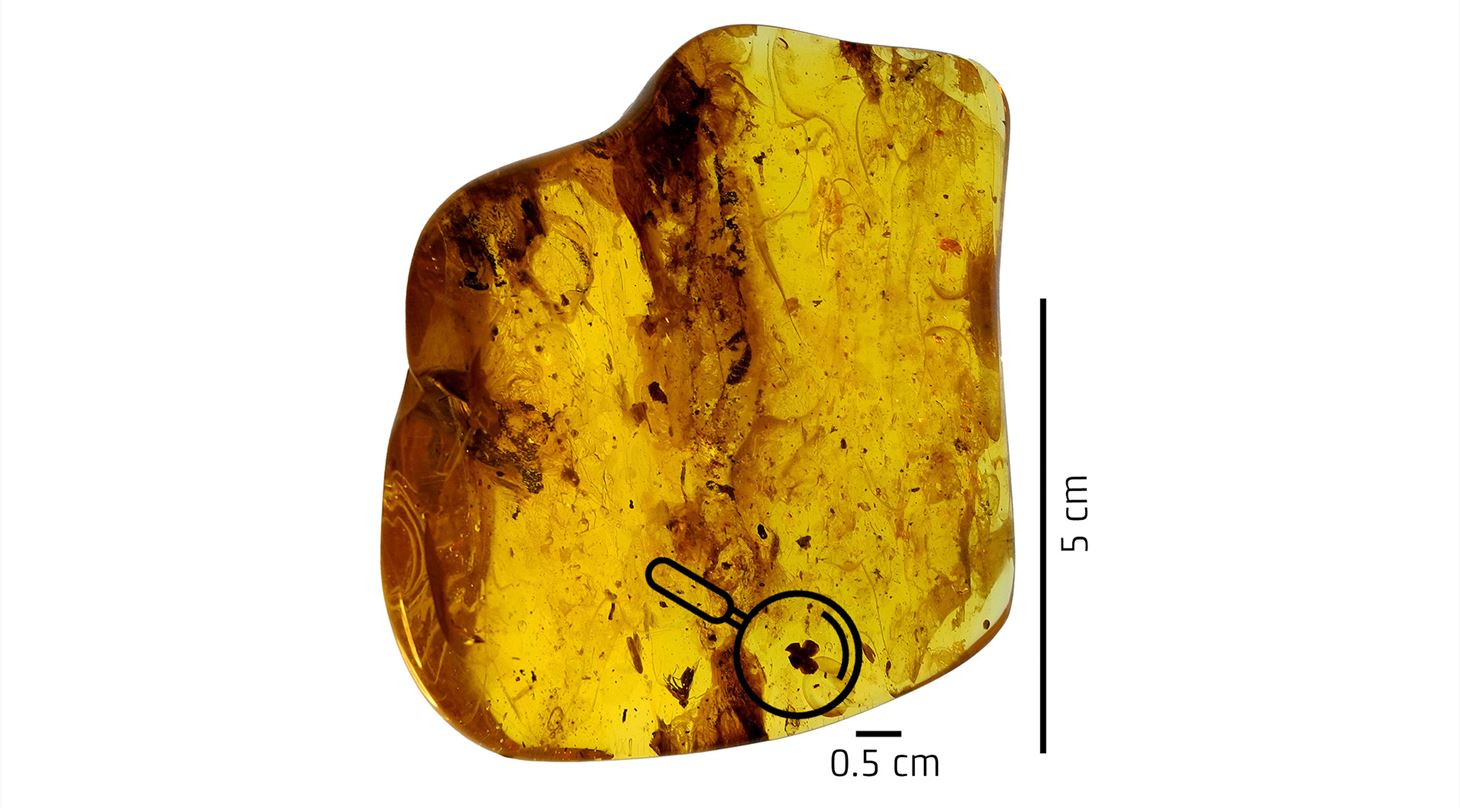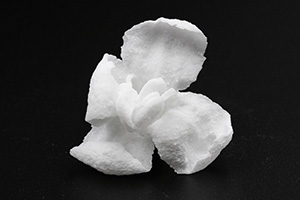
Advanced technology identifies 40-million-year-old Holly flower in a piece of amber
An unusually well-preserved flower encapsulated in amber was analyzed by specialists from the Danish Technological Institute using advanced synchrotron technology. This has made it possible to identify the flower—which has now been designated as "danekræ"—as the first fossilized holly flower known in the world.
Nearly 40 million years. That’s how long a flower has been encapsulated, first in resin and later in amber. Now it has been found on a beach near Hvide Sande and can contribute to our knowledge of the past and future of plants. The flower differs from many other amber discoveries by being exceptionally well-preserved.
- It’s an extraordinary find that gives us a window into the biodiversity of the past. But it also provides us with a crystal ball, enabling us to predict how the current flora might respond to future climate changes. The flower lived during a time when Earth was significantly warmer than it is today, says botanist Bo Johansen from the Natural History Museum of Denmark.
Learn more about the work involved in identifying the flower in the video here – the story continues after the video.
Complex challenge to identify the flower
The botanists suspected that the flower was a new species of flower, but they faced a complex challenge: the rare find was encapsulated in a thick layer of amber, making it impossible to examine the flower in detail with a microscope. Things were further complicated by the fact that the amber piece had been designated as "danekrae," meaning it could not be destroyed during the investigation.
To overcome this, the museum collaborated with specialists in microanalysis at the Danish Technological Institute, who sent the amber piece to the synchrotron facility ESRF in Grenoble for tomographic measurements. The result was thousands of high-resolution X-ray images, revealing even the smallest details inside the flower.
“When we received the images, we began extensive data processing. We started by digitally removing the amber from the flower. Then we assembled the thousands of images into an accurate 3D visualization, allowing the botanists to view the flower from all angles and zoom in on details like the petals and stamens,” explains Susan Cooper from the Danish Technological Institute.
When we received the images, we began extensive data processing. We started by digitally removing the amber from the flower. Then we assembled the thousands of images into an accurate 3D visualization, allowing the botanists to view the flower from all angles and zoom in on details like the petals and stamens
- Susan Cooper, Danish Technological Institute
New fossil species identified and designated as Danekrae
The museum was thrilled with the many new details, which enabled botanists to identify the flower's genus and gender.
- With the 3D visualization, we were able to show so many details that we could prove the flower belongs to the genus Ilex, commonly known as holly. This is the first fossil holly flower to be definitively identified. It has been designated as 'danekræ' and named after the finder of the amber piece, Lars Wenneberg. It is now called Ilex wennebergii, says botanist Finn Rasmussen from the Natural History Museum of Denmark.

The prestigious journal Nature Scientific Reports has since published a scientific article about the discovery, authored by the museum and the Danish Technological Institute - you can read that here.
Additionally, the Danish Technological Institute has 3D-printed the flower in nylon based on the 3D visualizations. The printed flower can be seen in the image to the right.
Facts about Danekrae
Danekræ is the natural history counterpart to "danefæ," which refers to discoveries of cultural historical value. The flower has been examined by the Danekræ Committee, which designated it as danekræ based on its rarity, state of preservation, and scientific value.